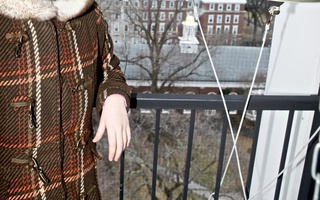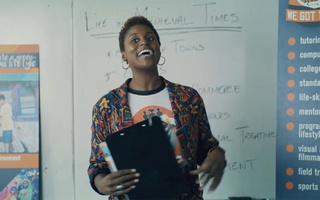{shortcode-8c97ad13d812ebd7af9f3675a35b6aad0e3acd1f}
Rae Sremmurd (Is that even how you spell their name?) have emerged from hibernation with their most recent music video for their single, “Black Beatles.” It follows a series of amusingly successful singles from their first studio album, “SremmLife” (Is that even spelled correctly?). It was an album that begged the following questions: Did anyone ever come and get the girl who was acting like a stripper (“Come Get Her”); do Rae Sremmurd ever find their type (“No Type”); and is the last m in “SremmLife” silent?
Their most recent single is a far more serious affair. On the surface, it appears to be an aching polemic that powerfully places their current musical success within the larger historical context of the Beatles, indicating that they, as black artists, have managed to carve out a space within the American—nay, international—musical imagination that was formerly reserved for white artists. However, underneath that exterior is a far more moving message about the marauding horrors of eyesight loss: A PSA for those with challenged eyesight.
Its opening shot contains two contrasting images, the first of which is a marquee with the words “Black Beatles.” Ignore that sign. Below it—pay attention, this is absolutely critical—is an illuminated sign that reads “Elite Parking Systems,” adjacent to an outline of the United States. With black letters on a white sign—none of the letters touch the outline of the United States—it symbolizes the difficult position that Rae Sremmmurd imagines American blacks occupying in the periphery of American culture. However, the shot quickly develops to zoom in on the “Black Beatles” sign and away from the critical “Elite Parking Systems” sign. This is strikingly similar to the way in which the visually impaired may have problems seeing the whole of an image. The connection cannot be ignored: As our critical sign moves out of the camera frame with mechanical efficiency, it represents the way in which the healthcare system mechanically disenfranchises the visually impaired.
Continuing the theme, the rest of “Black Beatles”—with some notable exceptions, the importance of which will be lovingly elucidated—is edited to make each image appear faded. This is no mere gimmick. Instead, it is Rae Sremmmmurd’s attempt to place the viewer in a position of empathy with the visually impaired. The contents of each shot are slightly obscured (Is that the component parts of Rae Sremmmmmurd running across a crowded highway or mere impersonators?) so that Rae Sremurd allow for the difficulties of the visually challenged to be understood by all. The visuals reduce the acoustic element of the music video into a melodic chant: “Glasses for one. Glasses for all.”
Nevertheless, a brief moment of clarity occurs at 1:18, when a man throws a guitar at a television in a shot with perfect video quality. It is a symbol that cannot go unnoticed: The revolution for the visually impaired will not be televised (a delightful rejection of malicious irony). Instead, it finds itself at our American doorstep in musical form. The importance of this revolutionary imagery is magnified by its repetition in a nearly identical scene at 4:23, allowing these images to serve as a framing device for the video.
A revolution for what? Free eye care for all. Note the eyewear above the ice cream cone tattooed on the face of Gucci Mane, otherwise known as La Flare, Guwop, or the prodigious feature on “Black Beatles.” The eyewear is covered in Christian crosses, a symbol that eyesight and the lack thereof is a gift given by God. It is an invocation for God to lift the burden of bad eyesight. It is as if Mane is saying: Lift the burden of the crosses from my eyes as you lifted the burden of the cross from Jesus. Only then does it become even more apparent that the song title—and its video’s implications of Rae Sremmurd (Wait, is that spelled correctly?) being the black reincarnation of the Beatles—are just a product of the viewer’s own bad eyesight.
{shortcode-4d9c853753f9342f841e34fff9f25a011c0ab646}
—Staff writer Aziz B. Yakub can be reached at aziz.yakub@thecrimson.com
Read more in Arts
'Hag-Seed' Elaborate and Unconvincing
















